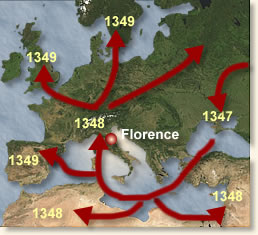First let's define a watershed. A watershed is any region or area drained by a river, stream or other water system. Watershed can also refer to the dividing line between river drainage systems.
To answer the question at hand.....
No.
There are several Basins that do not empty into other watersheds. Endorheic basins are those that do not have an outflow and so build up water. There are many of these throughout the world (For example the Black Sea in Eur-Asia). Most of these basins are going to occur in an area where a divide watershed is blocked from reaching the ocean or outflow river by natural barriers such as another mountain range or plateau. Most of these systems are going to involve a lake or sink where the water builds up. Many sinks are intermittent meaning they have water in one season and are dry lakes in others. The other features of a sink include being below sea level nd lose water either through evaporation or loss into groundwater or aquifers. These are also sometimes called ephemeral lakes.
On the North American Continent you can find the following basins with these qualities:
Guzman Basin in northern Mexico which drains the Mimbres River from New Mexico.
Willcox Playa in southern Arizona. This is a sink or large dry lake which collects water. Most notably this is an area inhabited by Sandhill Cranes and also has great opportunities for winter birding.
Tulare Lake in California though agricultural demands have dried this lake because its infeeds were diverted for irrigation. Years of record weather that overwhelm flood control tend to bring this basin back to a water filled lake.
Crater Lake in Oregon is sometimes considered a enclosed water system. Though this is not a watershed system with rivers merging to a final lake like the other systems are.
In fact, there are piles of lakes throughout North America that have inflow and no outflow. These include all the following lakes plus many more...
Devils Lake ND
Devil's Lake WI
Little Manitou and Old Wives Lakes in Saskatchewan
Pakowki in Alberta
Lago Enruquillo on Hispanola
Tularosa Basin NM
Zuni Salt Lake NM
And a multitude of others in ND and Manitoba.
There are also the individual locked lakes, Sinks and Valleys within the Great Basin which is different than the Great Divide Basin. The Great Basin includes some well known lakes such as The Great Salt Lake, Groom Dry Lake (Where Area 51 is), Goose Lake (CA), Malheur Lake (OR), Carson Sink NV and others. More about the Great Basin here which is a set of closed basins in close proximity to one another in Nevada, Oregon and Utah.
So what is the Great Divide Basin then?
The Great Divide Basin is in Wyoming and gets the name from being an enclosed basin on the Continental Divide. This area is basically a rectangle enclosed by mountains. Information on the Great Divide Basin.
Hopefully this clears up the idea of what is included in the idea of an enclosed watershed. North America has quite a few of these systems. Some have many inflows and no outflows. Others are simply lakes (like Crater Lake) that have no inflow or outflows.





